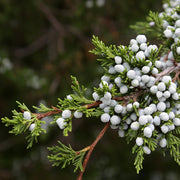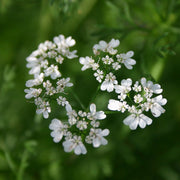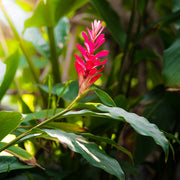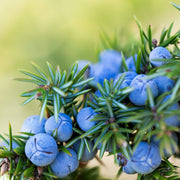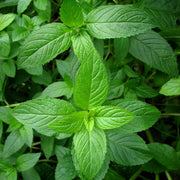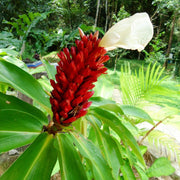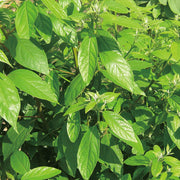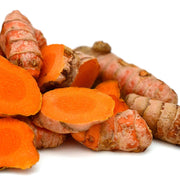What is kombo butter?
Kombo butter is a little-known butter from West Africa, made from the seeds from a tree called Pycnanthus angolensis (also called African nutmeg). It has a deep, dark brown color that has an almost blue tint to it and has a slightly grainy texture that absorbs quickly. Some people describe kombo butter's aroma as deep and earthy, with subtle hints of mushrooms. Others smell caramel and fruit!
Kombo butter is rich in myristic and myristoleic acid content, also found in products used to comfort joints and muscles, and reduce pain.
Kombo butter benefits: myristoleic acid & more
Studies have found myristoleic acid to reduce inflammation levels, and researchers of a 2013 study even called it a “potent antiarthritic agent.” Its presence helps explain why kombo butter is such a powerful natural ingredient for blends intended to soothe muscles and joints.

In addition, kombo butter contains kombic acid, oleic acid, palmitic acid, and phytochemicals that act as antioxidants and add their own comforting effects. The components in kombo butter have even been shown to reduce the presence of some microbes.
What does this mean for your blends?
It means you can use kombo butter to:
- Soothe sore, tender issues
- Purify your skin
- Offer antioxidants that protect against damage
Despite these powerful benefits, kombo butter still isn’t very well known. Using kombo butter for your friends or clients can help your blends stand out from the crowd!
How to use kombo butter
Kombo butter has a thick, pudding-like texture, and feels a little grainy between the fingers. It spoons easily into jars, but it can also be sticky and messy to work with. Its dark color can stain linens or clothes.
While you can massage kombo butter directly into fingers, knees, or other achy areas, you might find it easier to apply as part of a blend. It melts with other butters and oils—like shea butter and avocado oil—to make rich, luxurious butters that spread smoothly over your skin. It’s also a great ingredient for firm salves and pain reliever balms. Kombo butter brings a deep, warm brown hue to your products! (Just be aware that this color might get on light colored clothes and linens, and use your kombo blends accordingly.)
Use kombo butter—and the blends you make with it—to ease joints and muscles that need ongoing care, or to comfort them after a particularly strenuous workout.
Kombo butter vs Shea butter vs Cocoa butter
Kombo butter, shea butter, and cocoa butter are all plant-based butters that are derived from the nuts or seeds of trees native to West Africa. They share some similarities, but they are distinct ingredients with different properties and uses. While all three butters are rich in fatty acids and have moisturizing properties, they have different compositions and different benefits for the skin and hair. Cocoa butter is often used for its ability to hydrate and improve skin elasticity, shea butter is known for its ability to soothe and nourish dry and sensitive skin, and kombo butter is often used for its analgesic and anti-inflammatory properties to help alleviate joint pain and muscle pain. Use kombo butter for rheumatoid arthritis, knee pain, sports related injuries, and other pain relief.
What essential oils blend with kombo butter?
You can blend any essential oils you like into kombo butter recipes! It’s usually used for sore, tender areas, meaning you might want oils that complement that purpose. Try some of the following!
- Balsam fir oil (Abies balsamea)
- Cedarwood oil (Juniperus virginiana)
- Coriander oil (Coriandrum sativum)
- German chamomile oil (Matricaria recutita)
- Ginger oil (Zingiber officinale)
- Juniper berry oil (Juniperus communis)
- Peppermint oil (Mentha × piperita)
- Plai (Central) oil (Zingiber cassumunar)
- Sugandha kokila oil (Cinnamomum glaucescens)
- Turmeric oil (Curcuma longa)
Kombo butter DIY recipes for muscles & joints

Learn More
Essential oil carriers are natural vegetable oils, butters (like kombo), waxes, and other substances that you can apply to your skin—either exactly as they are or in blends. We call them “carriers” because we use them to dilute essential oils.
Kombo butter is featured in Chapter 4 of our Essential oil carriers learning guide, Exotic carriers for luxurious blends. Learn how to work with unique, exotic carriers, like kombo butter to grow your skills and make a wider variety of blends.











